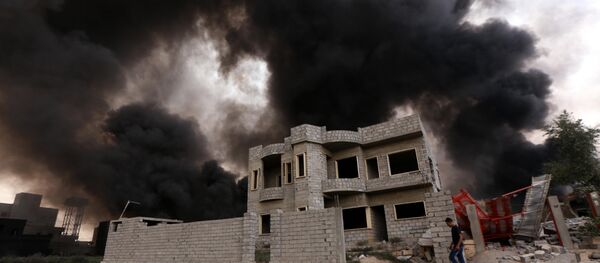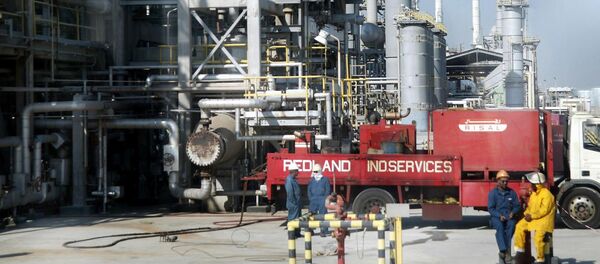Speaking to Sputnik Persian, Sazhin, a senior fellow at the Center for Middle East Studies under the Russian Academy of Sciences, started off by recalling that for decades now, Iran and Saudi Arabia haven't exactly been the best of friends, each country vying for political and military influence over the Middle East. Relations reached a low point in January 2016, when Riyadh broke off diplomatic relations Tehran in connection with a sectarian conflict arising following Riyadh's provocative execution of a Shia cleric on New Year's Day.
The two countries' rivalry is complicated, Sazhin added, by the fact that both are key members of the Organization of the Petroleum Exporting Countries (OPEC). In 2015, Saudi Arabia accounted for over 13% of global oil output, while Iran produced over 4% of the world total, (putting the two powers in second and fifth in the world in gross output, respectively).
"And if Iran, under oil and financial sanctions between 2012-2016, did not pose any serious risk of competition with Saudi Arabia during those years, after the signing of the nuclear agreement in the summer of 2015, the situation changed. Tehran, like a restless horse, lunged forward into an oil race, looking to restore output, exports, and its position in the global market."
Naturally, Sazhin noted, the Saudis aren't happy with this arrangement. "And here's why: In mid-February 2016, Russia, Saudi Arabia, Venezuela and Qatar announced their willingness to maintain average oil production at the level of January 11, 2016, and not to exceed them in the future – that is, to freeze them. Subsequently, the proposal was supported by Algeria, Kuwait, Oman and Ecuador, with one important caveat: that such a freeze makes sense only if other major oil producers join the agreement."
"And here complexities arose. Iran, Libya, Nigeria and Iraq greeted the idea without much enthusiasm. Everyone seemed to be in favor, but no one wanted to be at odds with their national business interests. Talks at various levels and in various forums conducted by the oil producing countries (both members of OPEC and not) did not give any results throughout the year."
In talks late last month, Saudi Arabia insisted that Iran's output not exceed 3.66 million barrels a day, promising to reduce output to 10.2 million barrels a day in return. "But here representatives from Tehran pointed out that starting in 2014 Riyadh had increased the volume of their oil output by about 1 million barrels, thus expanding their market share, and now are only ready to cut production by about 400,000 barrels. Iran, in turn, is saying that it is ready for an oil output freeze, but only after it reaches its pre-sanctions levels."
"This, of course, will have an impact on world oil prices," according to the expert. "Holding prices at around $50 a barrel during the course of the year was made possible only thanks to countries' statements on their readiness to freeze oil production. At the moment, almost no one believes in these statements anymore, as output continues to grow, while prices decline somewhat. It's noteworthy that Goldman Sachs published a forecast November 1 predicting a reduction in prices to $40 a barrel if OPEC's November 30 meeting does not reach an agreement on freezing output" (currently Brent crude is sitting at around $45.50).
"In this way," Sazhin stressed that "the Iranian-Saudi struggle on the 'oil front' affects the entire global oil market, and oil prices. This is certainly a very important point, but not the only one. The confrontation in oil output reinforces the general tension between the two countries, and negatively affects the situation in the Middle East and around the globe," the analyst concluded.







